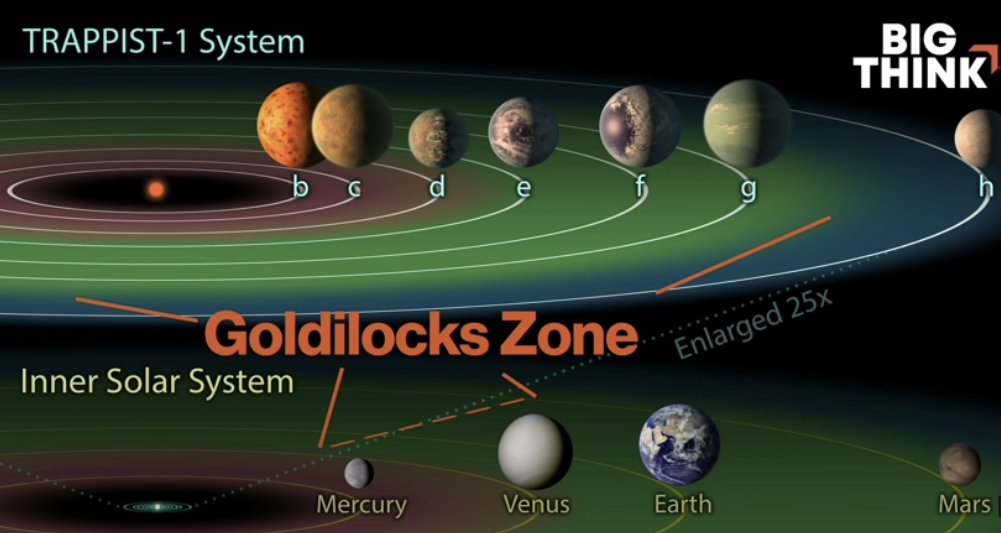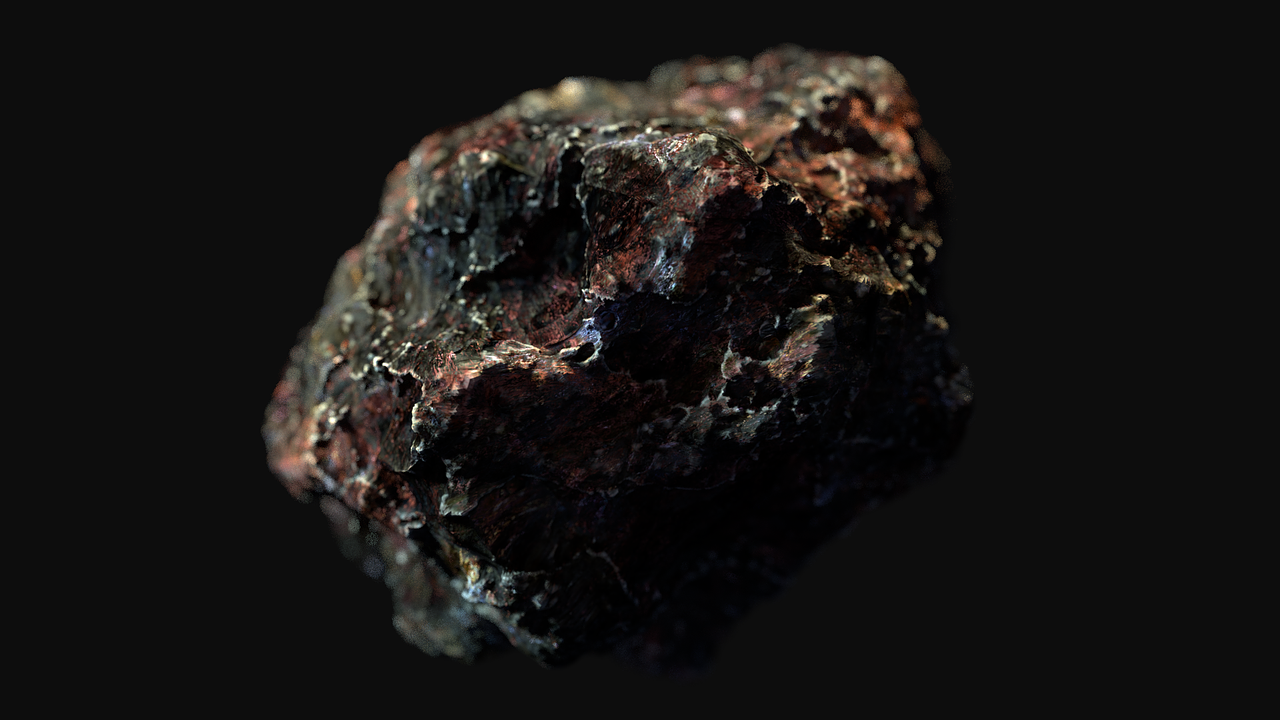Neil deGrasse Tyson explores 3 mind-blowing space facts

- In 2020, Dr. Neil deGrasse Tyson sat down with Big Think to discuss topics like dark matter, the Goldilocks Zone, and the surprising effects physics have on everyday events.
- Dr. Tyson explains how the search for alien life doesn’t need to be limited to the Goldilocks Zone, which are the regions of space where heat from a star would allow liquid water to exist.
- Dr. Tyson also outlines his gripes with dark matter, a force which he argues is misnamed.
Besides Carl Sagan, few science communicators have done more to inspire and educate the public about the cosmos than astrophysicist Dr. Neil deGrasse Tyson. It’s maybe no surprise given his long career. Influenced and even briefly mentored by Sagan in the 1970s, Dr. Tyson began lecturing on astronomy at the age of 15, became the director of the popular Hayden Planetarium in 1995, hosted several episodes of Nova and the reboot of Cosmos, writes articles on science, and regularly makes media appearances to speak on scientific subjects.
In 2020, Dr. Tyson sat down with Big Think to discuss several topics about the universe. As always, his insights are exciting, insightful, and surprisingly down to Earth.
When looking for aliens, forget Goldilocks
If you want to find a potentially habitable world, conventional thinking has long said that you should look toward the Goldilocks Zone: the regions of space that lie an optimal distance away from a star. The temperatures within the Goldilocks Zone are “just right” for liquid water and life as we know it to exist, similar to the various items belonging to the baby bear in the fairy tale.

But Dr. Tyson reminds us that the energy needed to keep water liquid doesn’t need to come from the sun, meaning our search for extraterrestrial life isn’t limited to these zones. Case in point: Europa, one of Jupiter’s largest moons.
Because this moon sits well outside of the Goldilocks Zone, you might think that energy from the Sun would be too weak to sufficiently warm the planet and allow liquid water to exist. But the Sun isn’t the only source of energy.
Dr. Tyson explains:
“So, Jupiter and surrounding moons are actually pumping energy into Europa. And how does it do that? As Europa orbits Jupiter its shape changes. It’s not fundamentally different from tides rising and falling on Earth. The shape of the water system of the Earth is responding to tidal forces of the moon. And when you do that to a solid object, the solid object is stressing. And because of this, a consequence of this is that you are pumping energy into the object.”
Europa warms up because of this shape-changing process, and the evidence can be seen in the cracks on the moon’s surface.
“So, you have this frozen world, Europa, completely frozen on its surface but you look at the surface and there are cracks in the ice. There are ridges in the ice where there’s a crack and it shifted and then refroze. So this ridge has a discontinuity in the crack and it continues in another place. So what this tells you is that Europe cannot be completely frozen because if it were nothing would be moving. You look at the surface of Europa, the frozen surface, there are like ice chunks that are shifted and refrozen and shifted again.”
Underneath that icy, cracked surface is likely liquid water.
“So all of us are convinced that beneath this icy surface is an ocean of liquid water. And there’s no reason to think it wouldn’t have been liquid for billions of years.
Dr. Tyson mentions other possible sources of non-solar energy in the solar system, such as the volcanic activity on Io, another Jovian moon, as further evidence that habitable worlds might lie outside the Goldilocks Zone. Another potential warming source is thermal vents on Europa, which could provide its vast ocean with geothermal energy and the nutrients needed to sustain life, as is seen near black smokers in the deepest parts of Earth’s oceans.
Dark Matter: What’s in a name?
When we look up at the night sky and try to determine why things are moving the way they are, astronomers and astrophysicists find that there is more gravity than there should be. A lot more. About 85% of the gravity that is seen affecting objects in the universe can’t be traced back to a source that we can detect in any way — it’s not coming from black holes, stars, gas, planets, or anything of the sort. We have named the sources for this gravity “dark matter.”
But Dr. Tyson isn’t a fan of this term, explaining:
“Now, dark matter is not even what we should be calling it because that implies that it’s matter. It implies we know something about it that we actually don’t. So a more precise labeling for it would be dark gravity. […] We’re overreacting to a label that overstates our actual insights or knowledge into what it is we’re describing.”
He goes on to suggest a possible source for the effect:
“I think we’re all kind of leaning towards a family of particles, subatomic particles that have hardly any ability to interact with the particles we have come to know and love, “ordinary matter.” And that would make it matter. Dark matter as we’ve all been describing it. And it’s not a weird thing that you could have a particle that doesn’t interact with our particles. Within our own family of particles there are examples where the interaction is very weak or nonexistent. You might have heard of neutrinos. This is a ghost-like particle that permeates the universe and hardly interacts with familiar matter at all.”
Particles like this are deemed “weakly interacting massive particles,” or WIMPs. Other proposals for what dark matter could be include the amusingly named MACHOs, or massive compact halo objects. These large objects, like black holes and brown dwarfs, are not luminous and would be difficult to detect in many situations. This theory seems less popular than it used to be.
Blame physics for your team’s loss
Dr. Tyson also explained a tweet of his that gave the credit for a Cincinnati Bengals win to the rotation of the Earth. The game was decided by a rather close field goal kick, one that was successful by a fraction of an inch. But why blame the kicker when you can blame the rotation of the Earth?
“…the rotation of the Earth helped that field goal kick,” Dr. Tyson said. “Because a kick going due north or due south will be deflected to the right in the northern hemisphere. And that’s exactly what happened to that kick.”
So, remember, physics isn’t all about how the universe works or where we can find aliens. Sometimes it’s about why your team is still the best and how the Bengals only won because the Earth itself decided to help them out.





